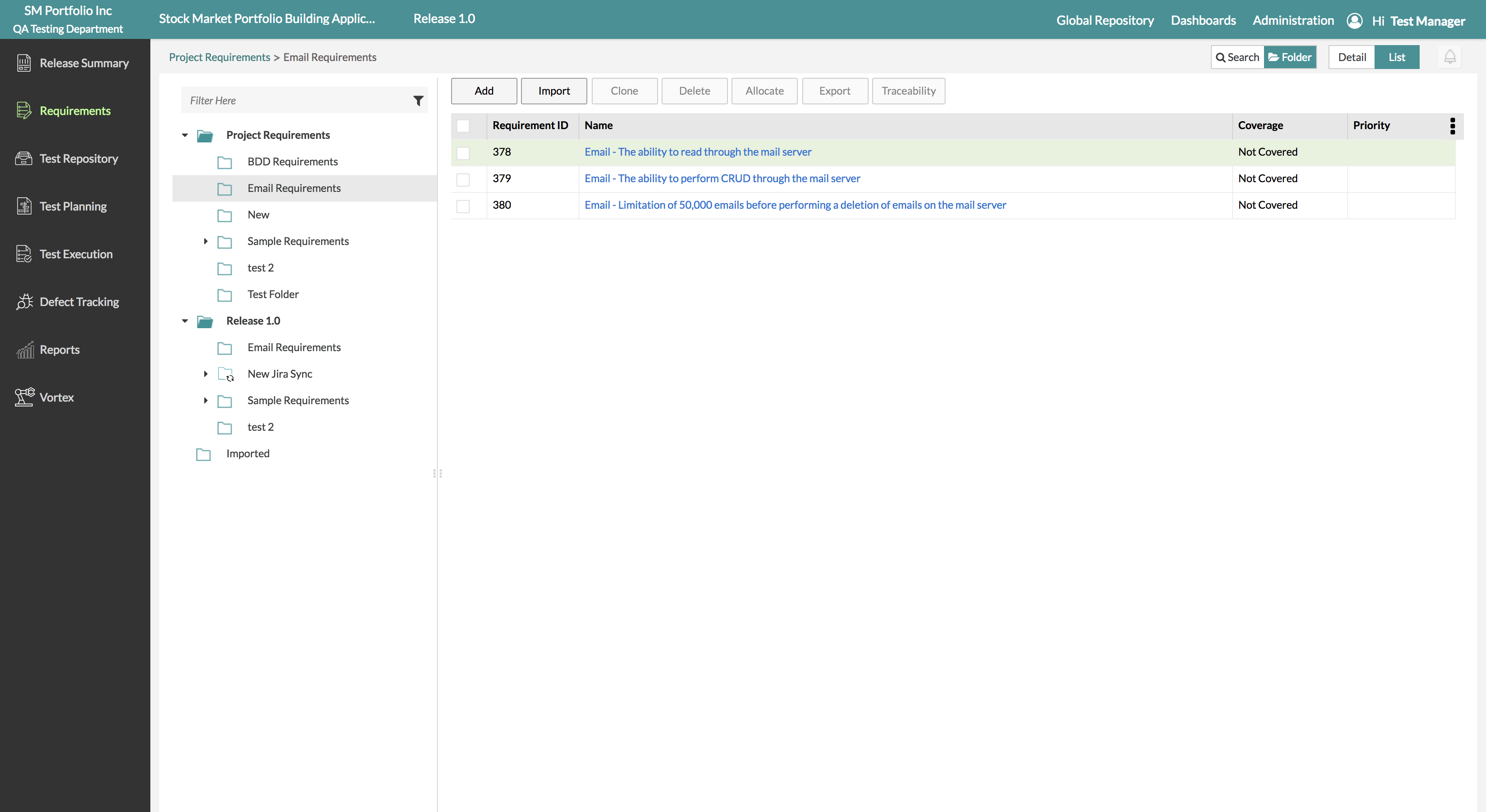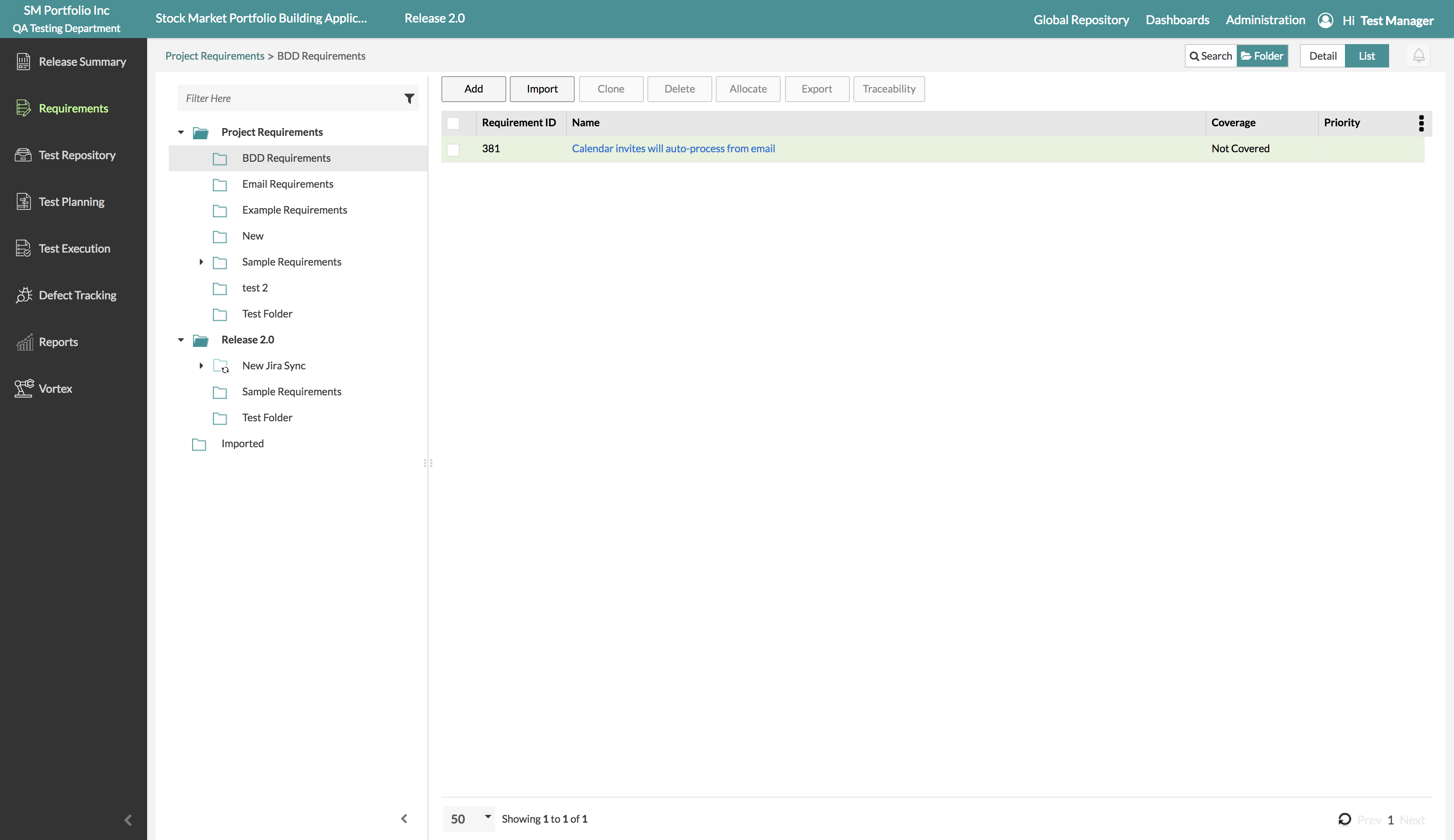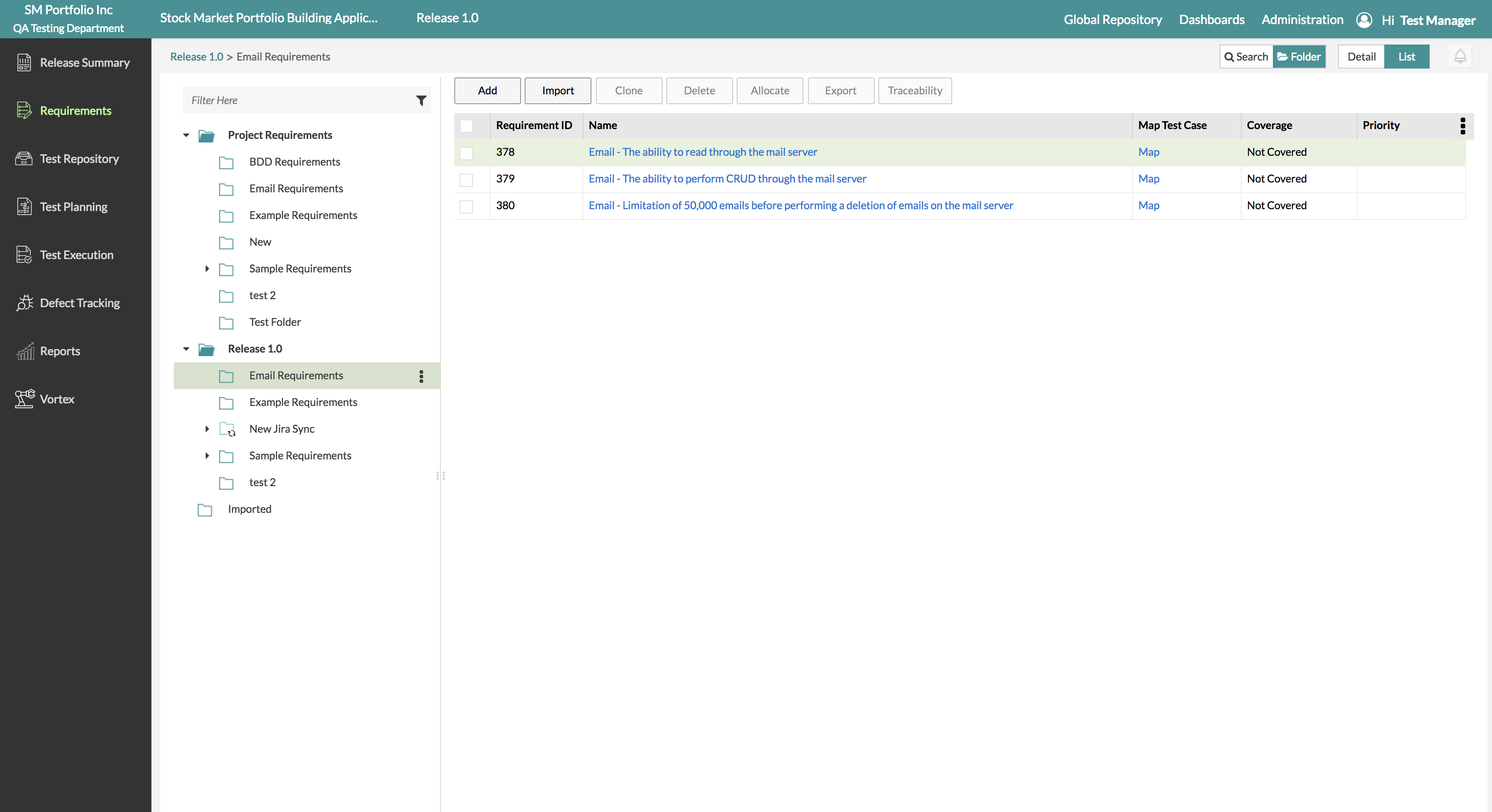Starting Release 8.2, Zephyr Enterprise documentation has moved from its current location on Atlassian to a dedicated, standalone Zephyr Enterprise Documentation page. Please see: https://support.smartbear.com/zephyr-enterprise/docs/en/zephyr-enterprise/zephyr-user-guide/requirements/project-and-release-requirement-repository.html
Release Requirement Repository Overview
The release requirement repository feature allows your Zephyr project to house all requirements for that specific release. Requirements that are created and managed in the specific release requirement folder structure can be viewed specifically for that release but can be used from the project requirement folder structure if need be.
Users are able to view and manage their release-level requirements for their individual releases in the release repository of the Requirements page.
For example, if we look at "Image 1", the release requirement repository will only display the Email and Example Requirements folder structure. Now if we look at "Image 2", the release requirement repository for this release shows a different folder structure. It will not show the BDD, Email and Example Requirements from the previous release. If we wanted to look at the requirements from one release to another, we would utilize the project requirement repository.
Image 1: Release Requirement Repository for Release 1.0
Image 2: Release Requirement Repository for Release 2.0
Project Requirement Repository Overview
The project requirement repository feature allows your Zephyr project to house all requirements for that specific project. Requirements that are created and managed in the specific project requirement folder structure can be viewed across all releases in the project.
Users are able to view and manage their project-level requirements in the project repository of the Requirements page.


